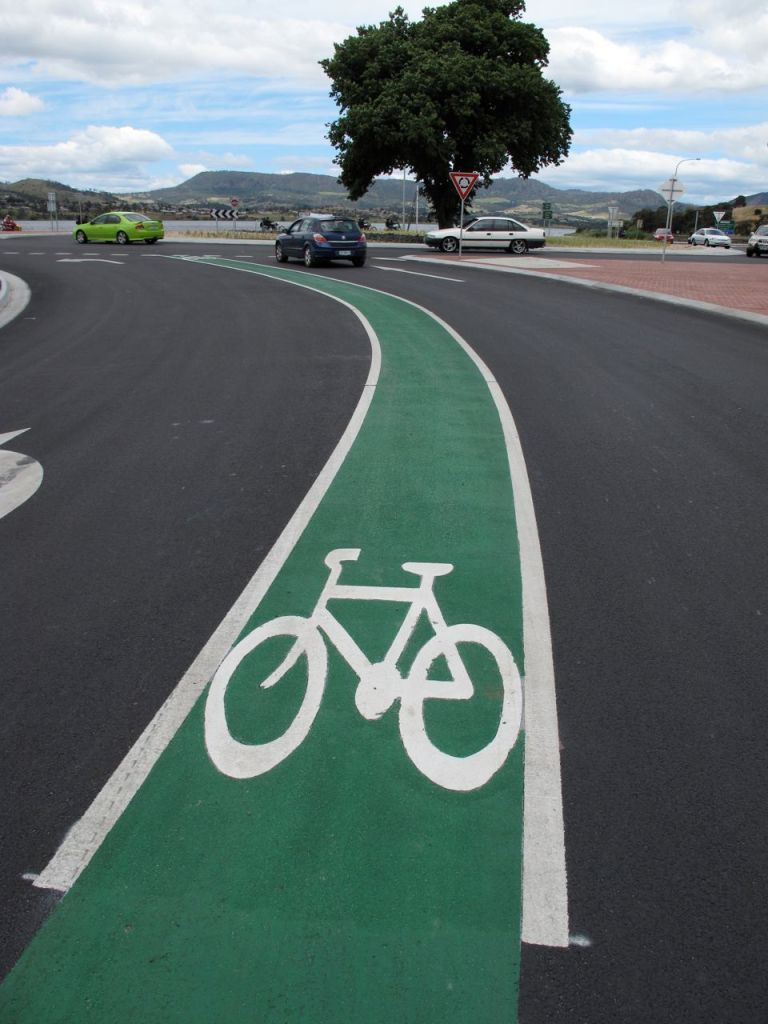They may seem innocuous enough, but roundabouts present a unique challenge for bike riders. Emma Clark investigates how they should be tackled.
“The driver didn’t give way to me!” “I was forced up the kerb by a truck squeezing past.” “Pedestrians walk across the road without looking!” Every rider who has ridden on urban roads will have a story of a near-miss at a roundabout.
Traditionally, roundabouts are used by traffic engineers as a cheaper alternative to traffic lights, and a means of reducing vehicle collisions. But for bike riders, they are a risk, leaving them vulnerable to drivers who don’t notice anything smaller than a Mack truck.
Roundabouts are essentially high-speed, unsigned and unsignalled intersections, made all the more dangerous as drivers don’t expect bikes to be there. Multi-lane roundabouts in particular are a nightmare: they leave riders exposed and prone to being hit from all directions. If possible, avoid them entirely or get off your bike and walk. It is not worth taking on this alarming piece of infrastructure and ending up in hospital.
It pays to be extra aware and cautious when approaching any kind of intersection, but a bit more forethought is a good idea when nearing a roundabout. Plan how you are going to ride through it well in advance, and remember, you have a right to be there – ride assertively.
Start looking for a gap in the traffic in the lane well before the roundabout, indicate your intentions of moving into the lane in a confident and clear manner, take the lane and become a part of the flow of traffic.
There is a common misconception that you must give way to your right in a roundabout. While this is practical, the law actually says that you must give way to any vehicle already in the roundabout (see Figure 1).
Enter the roundabout in the middle of the lane and go through it the same way you would if you were in a car. This will make you more visible to other vehicles approaching the roundabout and prevent cars travelling in the same direction from trying to squeeze past you.
Keeping your head up, making eye contact with drivers and using obvious and clear hand signals is particularly important when travelling through a roundabout. Some riders like to point directly to where they are exiting. If you can, keep your signalling going until you are through the intersection.
All other vehicles entering the roundabout must give way to you, but be vigilant – sometimes drivers won’t see you. Also be on the look out for aggressive drivers who see someone on a bike as offering them a potential gap to slip into.
Once through the roundabout, move back to the left side of the road.
Some single-lane roundabouts have bike lanes marked around the edge of the roundabout. These can put riders in a position where they are less likely to be seen, and they don’t work if you are making a right hand turn as they place you in the wrong position on the road. It is much safer to ride in the middle of the lane.
Demanding change
So, what is the best way to make roundabouts safer for riders? While the ideal solution would be to replace all roundabouts with traffic signals, this is a costly exercise for councils. Traffic-slowing measures such as zebra crossings at each ‘leg’ of the roundabout work to calm the traffic and make drivers more aware of their surroundings. Instead of a cursory glance to the right before barrelling through, drivers must wait and observe the traffic, reducing the chance of hitting a bike rider. Don’t hesitate to lobby your council or state road organisation to improve roundabouts for bike riders.
What’s your experience been like with roundabouts? Got any ideas on the best way to tackle them?
Ride On content is editorially independent, but is supported financially by members of Bicycle Network. If you enjoy our articles and want to support the future publication of high-quality content, please consider helping out by becoming a member.

I don’t think there is a safe solution on the roundabout for two lane traffic. You have to get to the other lane before turning right and this is dangerous and impractical for all vehicles.
Instead, cyclists should go straight ahead but there should then be a safe crossing point further along. So in effect it’s an elongated roundabout for cyclists so they’re away from the roundabout when they cross traffic.
My issue with roundabouts is when the vegetation in the middle is so high I can’t see cars entering from the other side and likewise they can’t see me. It’s not only when I’m cycling but also driving – surely you should be able to see the other side of a roundabout? There is one especially bad at the entrance to my street in Sanctuary Lakes (Vic) , I now get off my bike and walk it to the beginning of my street.
This article pretty much describes my approach to roundabouts. Prepare early, assert your presence in a lane, look everywhere and signal clearly. Matching the speed of the traffic in the roundabout makes things smoother as well.
Bike lanes can make it harder on the approach, especially on multi-lane roundabouts if you are turning.